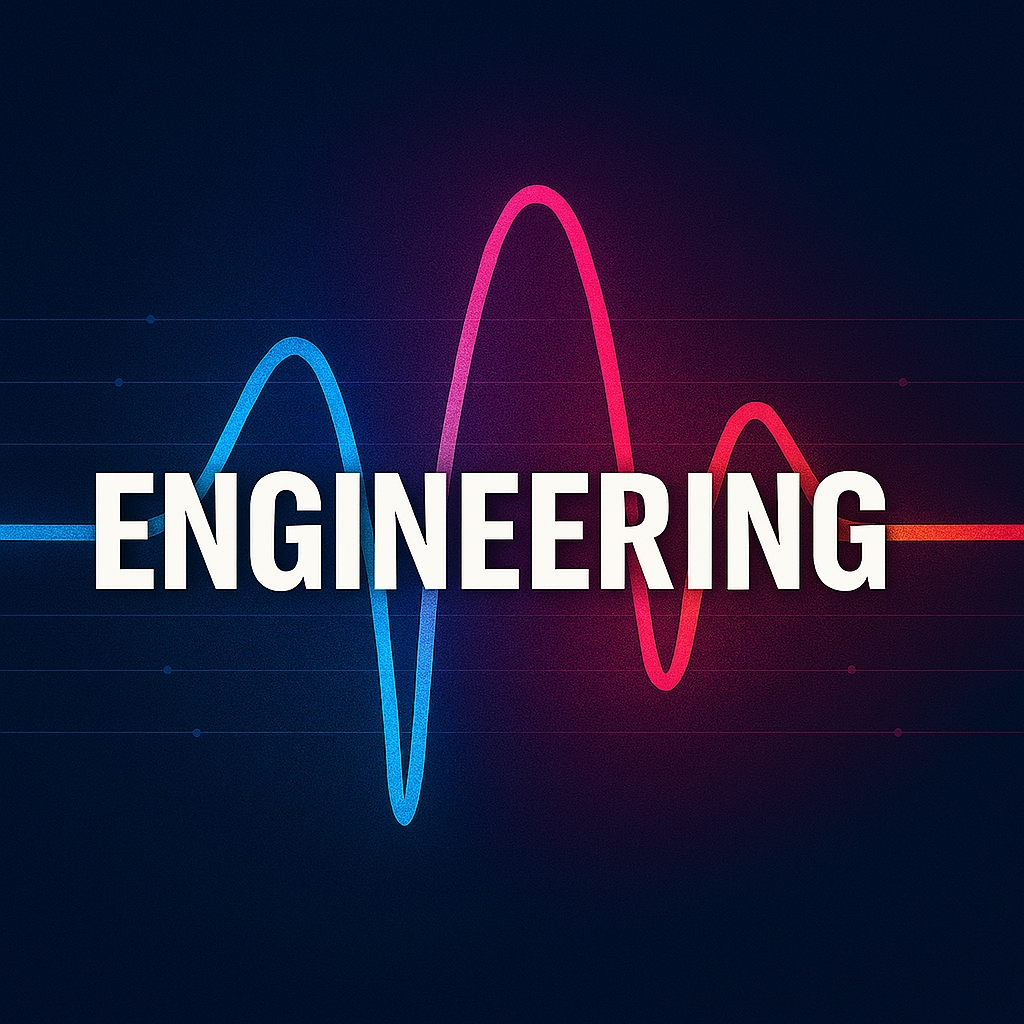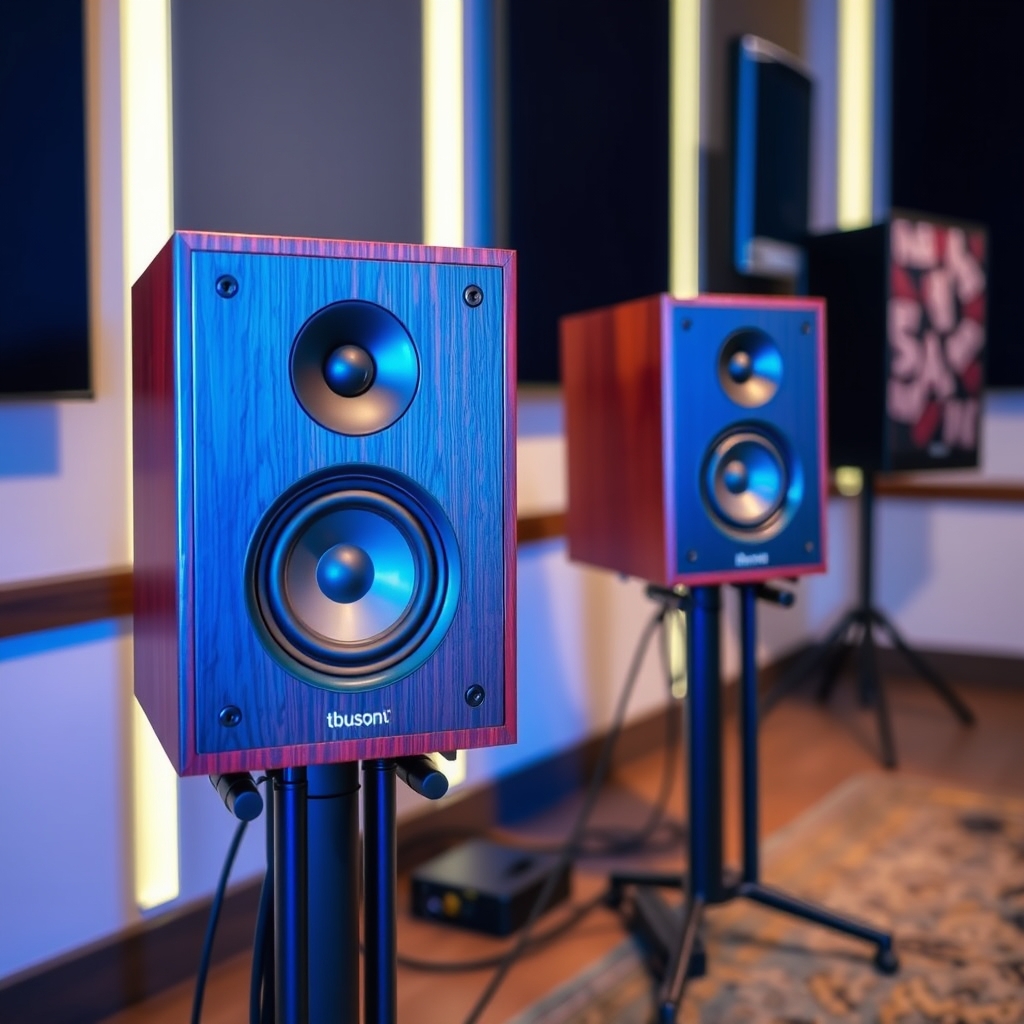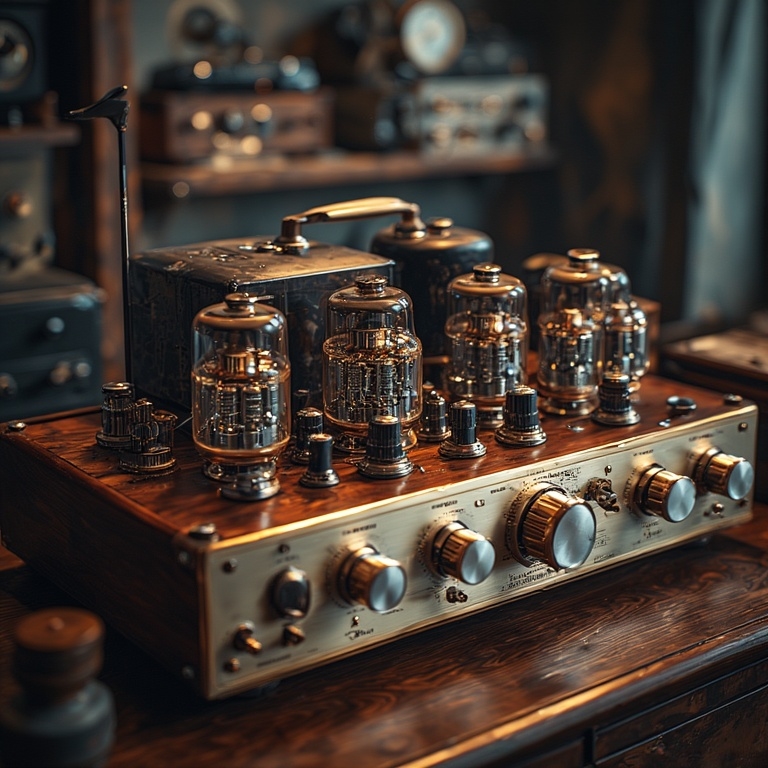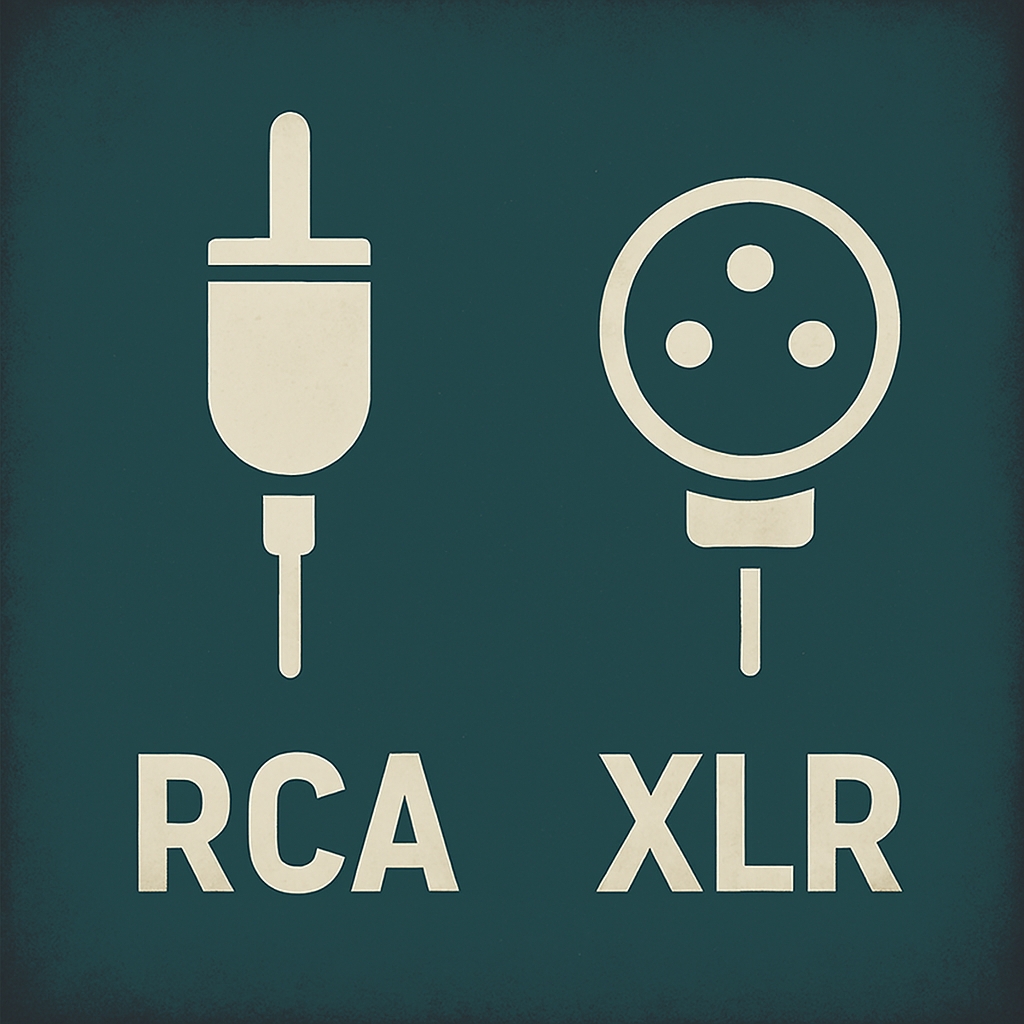Class D Amplifier
Class D amplifiers are a category of audio amplifiers that use high-speed switching technology to convert analog signals into powerful output with minimal energy loss. Unlike Class A or Class AB amplifiers that operate in a linear mode, Class D designs rely on transistors that switch fully on or off. This switching behavior dramatically reduces heat generation and improves efficiency. The input signal is first transformed into a series of pulses using pulse-width modulation or similar techniques. These pulses control the switching transistors, typically MOSFETs, which rapidly alternate between conducting and non-conducting states.
The resulting high-frequency signal is then filtered through a low-pass network to reconstruct the original audio waveform. This process allows Class D amplifiers to achieve efficiencies above 90 percent, making them ideal for compact, battery-powered, or high-power applications. Their design also enables lighter heat sinks and smaller enclosures. Despite early skepticism due to distortion and electromagnetic interference, modern Class D amplifiers now rival traditional analog designs in fidelity and dynamic range. Their adoption spans home audio, automotive systems, professional sound reinforcement, and portable electronics. Understanding how Class D amplifiers work requires a grasp of switching theory, modulation techniques, and output filtering. These amplifiers represent a shift from continuous analog reproduction to precision-controlled digital power delivery.

Class D Amplifier Powerful Output
How Class D Amplifiers Differ from Traditional Designs
Traditional amplifiers like Class A and Class AB operate by continuously varying the output transistors to match the input signal. This linear operation results in significant power loss as heat, especially when driving low-impedance loads. In contrast, Class D amplifiers use a binary approach where transistors are either fully on or fully off. This switching behavior minimizes the time spent in the high-loss region and dramatically improves efficiency. The input signal is not amplified directly but is first encoded into a high-frequency pulse stream.
These pulses are shaped to reflect the amplitude of the original signal. The switching transistors then drive the output stage with this modulated signal. A passive low-pass filter removes the high-frequency components, leaving behind a clean analog waveform. This architecture allows Class D amplifiers to deliver high power without bulky heat sinks or large transformers. It also enables smaller, lighter designs suitable for mobile and embedded applications. The trade-off is increased complexity in signal processing and filtering. Designers must carefully manage switching noise, electromagnetic interference, and timing precision. Advances in semiconductor technology and digital control have made these challenges manageable. Today’s Class D amplifiers offer performance that rivals or exceeds analog designs in many contexts.
The Role of Pulse-Width Modulation in Class D Amplification
Pulse-width modulation, or PWM, is the cornerstone of Class D amplifier operation. It converts the analog input signal into a series of digital pulses whose width corresponds to the signal’s amplitude. These pulses are generated at a frequency much higher than the audible range, typically between 300 kHz and 1 MHz. The switching transistors respond to this pulse stream by rapidly toggling between on and off states. The result is a high-frequency square wave that carries the audio information in its duty cycle. A low-pass filter at the output removes the high-frequency components and reconstructs the analog waveform. PWM offers several advantages in Class D design. It enables precise control of output power, minimizes distortion, and supports high efficiency.
The modulation process is typically handled by a dedicated controller or digital signal processor. Variants of PWM, such as sigma-delta modulation, may be used to improve resolution and reduce noise. The accuracy of the PWM signal directly affects the amplifier’s fidelity. Designers must ensure that timing jitter, quantization error, and switching delays are minimized. Proper layout and shielding are also essential to prevent interference. PWM allows Class D amplifiers to deliver clean, powerful audio with minimal energy loss.

Switching Transistors and Their Impact on Performance
The choice of switching transistors is critical in Class D amplifier design. Most modern Class D amplifiers use MOSFETs due to their fast switching speed, low on-resistance, and high current capacity. These transistors must toggle rapidly between conducting and non-conducting states without lingering in the linear region. Any delay or inefficiency in switching can lead to power loss, distortion, or overheating. The gate drive circuitry must provide sufficient voltage and current to switch the transistors cleanly and quickly. Dead time, which is the brief interval between switching one transistor off and the other on, must be carefully controlled to prevent shoot-through or signal degradation. Some designs use complementary pairs of transistors in a half-bridge or full-bridge configuration.
This allows for balanced output and improved power handling. The layout of the transistor stage affects parasitic inductance and capacitance, which can impact switching behavior. Thermal management is also important, even in efficient designs. While Class D amplifiers generate less heat than analog types, high-power applications still require adequate cooling. Advances in silicon carbide and gallium nitride transistors offer even faster switching and higher efficiency. These materials are increasingly used in premium Class D designs for demanding applications.
Class D Amplifier Performance
Output Filtering and Signal Reconstruction
After the switching stage, the output signal of a Class D amplifier is a high-frequency square wave. To recover the original audio waveform, this signal must be passed through a low-pass filter. The filter typically consists of inductors and capacitors arranged to block high-frequency components while allowing audio frequencies to pass. The design of the filter affects the amplifier’s frequency response, distortion, and efficiency. A well-designed filter minimizes ripple, preserves phase integrity, and ensures flat response across the audible range.
The cutoff frequency must be chosen to balance fidelity and noise suppression. If the cutoff is too low, it can attenuate high-frequency audio content. If it is too high, switching noise may leak into the output. The filter also interacts with the load impedance, which must be considered in the design. Some Class D amplifiers use active feedback to monitor the output and adjust the switching behavior in real time. This improves linearity and reduces distortion. The filter components must be rated for the expected current and voltage levels. Proper layout and shielding help prevent electromagnetic interference and ensure clean signal reconstruction.
Efficiency and Thermal Management
One of the defining advantages of Class D amplifiers is their exceptional efficiency. Because the output transistors operate in a fully switched mode, they avoid the high power dissipation seen in linear amplifiers. Efficiency levels often exceed 90 percent, even under demanding load conditions. This means less energy is wasted as heat, allowing for smaller heat sinks and more compact enclosures. In battery-powered devices, high efficiency translates to longer operating times and reduced thermal stress. However, thermal management remains important, especially in high-power applications.
Even small inefficiencies can lead to significant heat buildup when driving large speakers or subwoofers. Designers use thermal pads, heat spreaders, and airflow channels to maintain safe operating temperatures. Some amplifiers include temperature sensors and protection circuits to prevent overheating. Efficient layout and component selection also contribute to thermal stability. The use of gallium nitride transistors can further reduce losses and improve thermal performance. Overall, Class D amplifiers offer a compelling balance of power and thermal control, making them suitable for a wide range of environments.

Signal Fidelity and Distortion Control
Early Class D amplifiers were criticized for poor sound quality and high distortion. These issues stemmed from limitations in switching speed, timing accuracy, and filter design. Modern Class D amplifiers have largely overcome these challenges through improved modulation techniques and advanced feedback systems. Signal fidelity now rivals that of Class AB designs, especially in midrange and high-frequency reproduction.
Total harmonic distortion (THD) levels are typically below 0.1 percent in well-designed units. Feedback loops monitor the output and adjust the switching behavior to correct errors in real time. This reduces nonlinearity and improves dynamic response. Some designs use multi-level modulation to increase resolution and reduce quantization noise. The choice of switching frequency also affects fidelity. Higher frequencies allow for finer pulse control and smoother output filtering. However, they require faster transistors and more precise timing. Designers must balance fidelity, efficiency, and electromagnetic compatibility. With proper engineering, Class D amplifiers can deliver clean, detailed audio across the full frequency spectrum.
Electromagnetic Interference and Shielding
Because Class D amplifiers operate at high switching frequencies, they can generate significant electromagnetic interference (EMI). This interference can affect nearby circuits, degrade signal quality, or violate regulatory standards. EMI is primarily caused by rapid voltage transitions and parasitic coupling between components. To mitigate these effects, designers use shielding, grounding, and layout optimization. Metal enclosures and grounded planes help contain radiated emissions. Ferrite beads and snubber circuits suppress high-frequency noise. Proper PCB layout minimizes loop areas and reduces inductive coupling.
Different signaling and balanced inputs can further improve immunity to interference. Regulatory compliance requires testing under standards such as FCC Part 15 or CISPR 22. In sensitive environments like medical devices or broadcast equipment, EMI control is especially critical. Advances in simulation tools and measurement techniques have made it easier to predict and manage interference. With careful design, Class D amplifiers can meet stringent EMI requirements without compromising performance.
Applications in Consumer Electronics
Class D amplifiers are widely used in consumer electronics due to their compact size, high efficiency, and low heat output. They power everything from smartphones and tablets to soundbars and Bluetooth speakers. In portable devices, their efficiency extends battery life and reduces thermal stress. In home audio systems, they enable slim profiles and integrated designs.
Many modern televisions use Class D amplifiers to drive internal speakers with minimal space and power consumption. Wireless audio products benefit from the amplifier’s ability to deliver clean sound without bulky components. Some headphone amplifiers also use Class D topology for lightweight, high-fidelity output. Integration with digital signal processors allows for advanced features like equalization, dynamic range control, and multi-channel mixing. The scalability of Class D designs makes them suitable for both low-power and high-power applications. As consumer demand for compact, efficient audio grows, Class D amplifiers continue to dominate the market.
Role in Automotive Audio Systems
Automotive audio systems have embraced Class D amplifiers for their efficiency and thermal advantages. In vehicles, space and power are limited, and heat dissipation is a major concern. Class D amplifiers allow manufacturers to deliver high-quality sound without large heat sinks or excessive current draw. They are used in head units, external amplifiers, and active speaker systems. Their ability to drive low-impedance loads makes them ideal for automotive speakers and subwoofers.
Integration with vehicle control systems enables features like volume leveling, noise compensation, and diagnostics. Some designs include CAN bus interfaces for seamless communication with onboard electronics. The ruggedness of Class D amplifiers also suits the automotive environment, where temperature and vibration can be extreme. EMI control is critical in vehicles to avoid interference with navigation, communication, and safety systems. With proper shielding and layout, Class D amplifiers meet automotive standards and deliver immersive sound experiences.
Use in Professional Audio and Live Sound
In professional audio, Class D amplifiers offer high power density and reliability. They are used in concert sound systems, studio monitors, and public address installations. Their lightweight design simplifies transport and setup, especially in touring applications. High-efficiency operation reduces the need for external cooling and lowers energy costs. Modern Class D amplifiers deliver clean, dynamic sound with low distortion and wide bandwidth. Some models include DSP features for crossover control, delay alignment, and system tuning.
Rack-mounted units often support multiple channels and remote monitoring. Reliability is critical in live sound, and Class D designs offer robust protection against overload, short circuits, and thermal stress. Their ability to drive large speaker arrays with minimal power loss makes them ideal for high-impact environments. As digital mixing and signal routing become standard, Class D amplifiers integrate seamlessly into modern workflows. Their performance and versatility continue to expand their role in professional audio.
Integration with Digital Signal Processing
Digital signal processing (DSP) enhances the capabilities of Class D amplifiers by enabling precise control over audio parameters. DSP modules can perform equalization, dynamic range compression, crossover filtering, and delay alignment. These functions are implemented in software and executed in real time, allowing for flexible system tuning. Integration with Class D topology allows the amplifier to respond dynamically to changes in signal content or environmental conditions.
Some designs use feedback from the output stage to adjust modulation parameters and improve fidelity. DSP also supports advanced features like room correction, voice enhancement, and multi-zone control. In multi-channel systems, DSP enables matrix routing and synchronization. The combination of Class D amplification and DSP creates powerful, adaptable audio platforms. Designers must ensure that processing latency and resolution meet the demands of high-fidelity reproduction. With proper implementation, DSP-equipped Class D amplifiers offer unmatched control and customization.

Advancements in Semiconductor Materials
The performance of Class D amplifiers is closely tied to the characteristics of their switching transistors. Recent advances in semiconductor materials have led to the adoption of gallium nitride (GaN) and silicon carbide (SiC) devices. These materials offer faster switching speeds, lower on-resistance, and higher thermal conductivity than traditional silicon. GaN transistors enable higher switching frequencies, which improve modulation resolution and reduce filter size. SiC devices handle higher voltages and currents, making them suitable for industrial and automotive applications.
These materials also reduce switching losses and improve efficiency. Their adoption requires changes in gate drive circuitry and layout practices. Designers must account for increased sensitivity to parasitic effects and ensure proper thermal management. The cost of GaN and SiC devices is higher than silicon, but their performance benefits justify the investment in demanding applications. As manufacturing scales and costs decline, these materials will become more common in mainstream Class D designs.
Future Trends and Innovations
The future of Class D amplification lies in continued integration, miniaturization, and performance enhancement. Hybrid designs that combine analog and digital elements offer new possibilities for fidelity and control. Machine learning algorithms may be used to optimize modulation and filtering in real time. Wireless connectivity and networked audio are driving demand for amplifiers that support streaming, synchronization, and remote management.
Advances in packaging and thermal design will enable even smaller and more powerful units. Environmental considerations are also shaping amplifier design, with a focus on energy efficiency and recyclable materials. Open-source platforms and modular architectures may democratize amplifier development and customization. As audio systems become more intelligent and interconnected, Class D amplifiers will play a central role in delivering scalable, efficient, and high-quality sound.
Conclusion
Class D amplifiers represent a transformative shift in audio engineering. Their use of high-speed switching and digital modulation enables efficient, compact, and powerful amplification across a wide range of applications. From consumer electronics to professional sound systems, their advantages in size, heat management, and fidelity have made them the preferred choice in modern audio design. The evolution of Class D technology reflects broader trends in semiconductor innovation, digital control, and system integration. Designers now have access to materials and tools that allow for precise, scalable, and environmentally conscious amplifier solutions. While challenges remain in areas like electromagnetic interference and ultra-high-fidelity reproduction, ongoing research continues to push the boundaries of what Class D can achieve.
As audio systems become more intelligent, networked, and adaptive, Class D amplifiers will remain central to delivering clean, efficient sound. Their ability to balance power and precision makes them a cornerstone of future audio architectures. Whether in a pocket-sized speaker or a stadium-scale sound system, Class D amplification offers unmatched versatility and performance. Understanding their principles and design considerations empowers creators to build audio experiences that are both technically sound and emotionally resonant.
Join the Discussion
Have you worked with Class D amplifiers in your own projects or installations? What challenges have you faced in terms of fidelity, interference, or integration? Are you exploring new materials like GaN or SiC in your designs?
#AudioEngineering #ClassDAmplifier #SwitchingTechnology #MOSFETDesign #DigitalModulation #SignalFidelity #ElectromagneticShielding #ThermalManagement #ProfessionalAudio #SemiconductorInnovation #DSPIntegration #GaNAmplifiers #SiCTransistors #LowPassFiltering #HighEfficiencyAudio















Leave a Reply